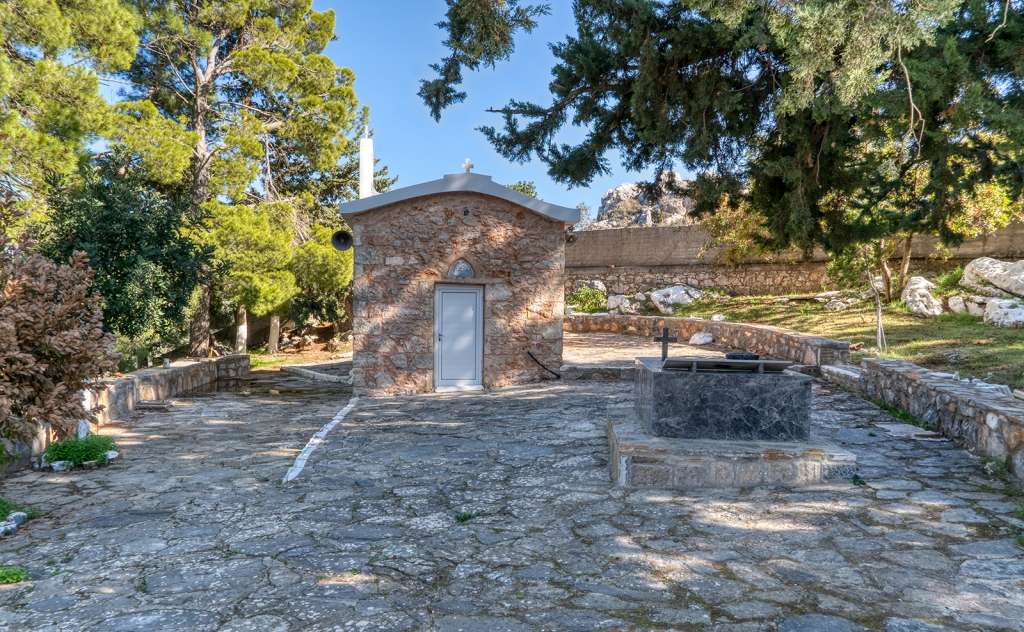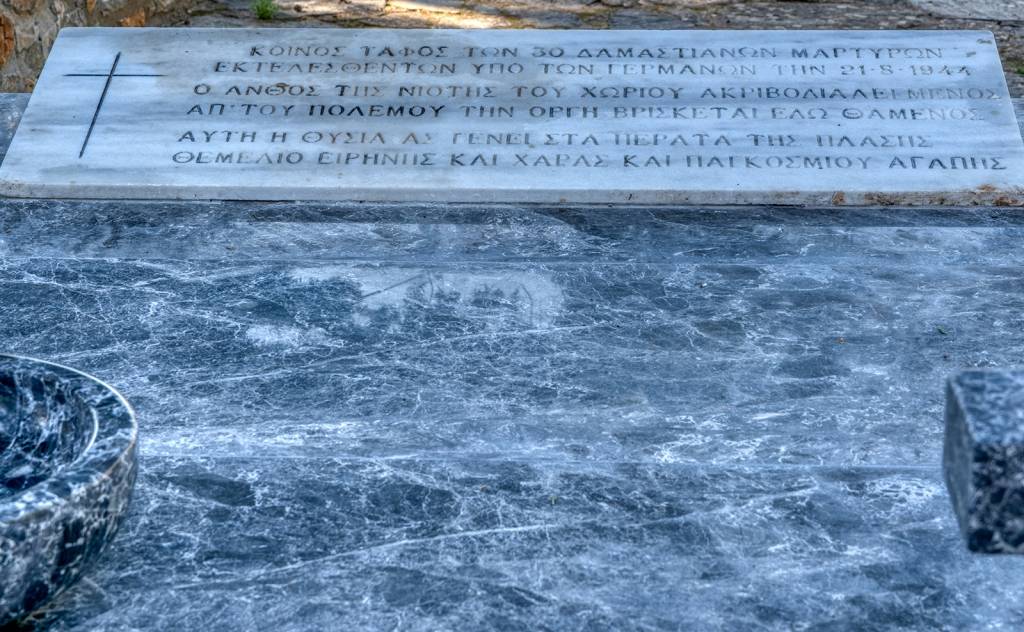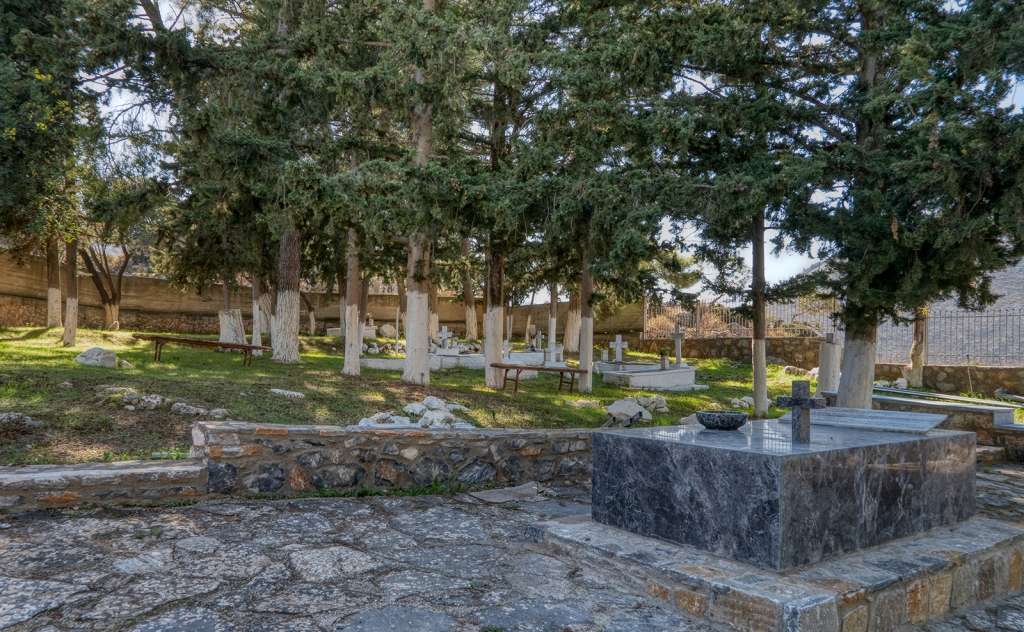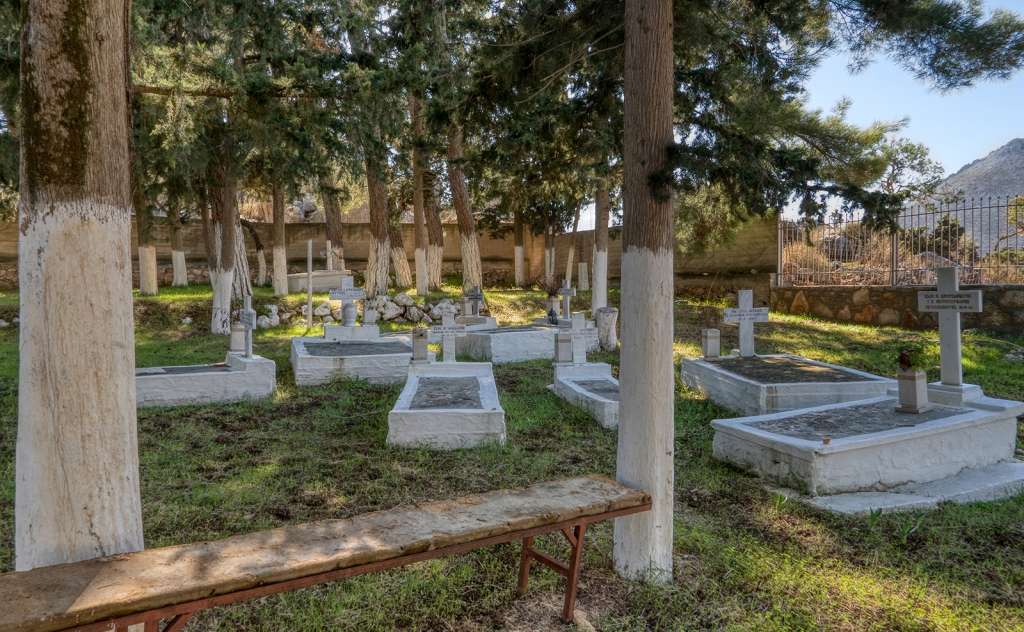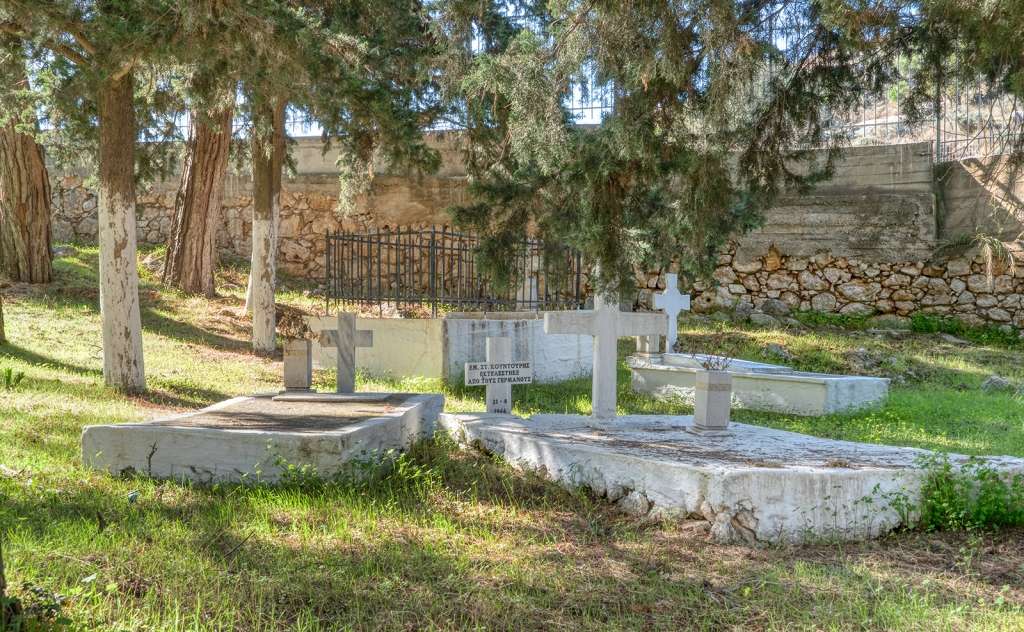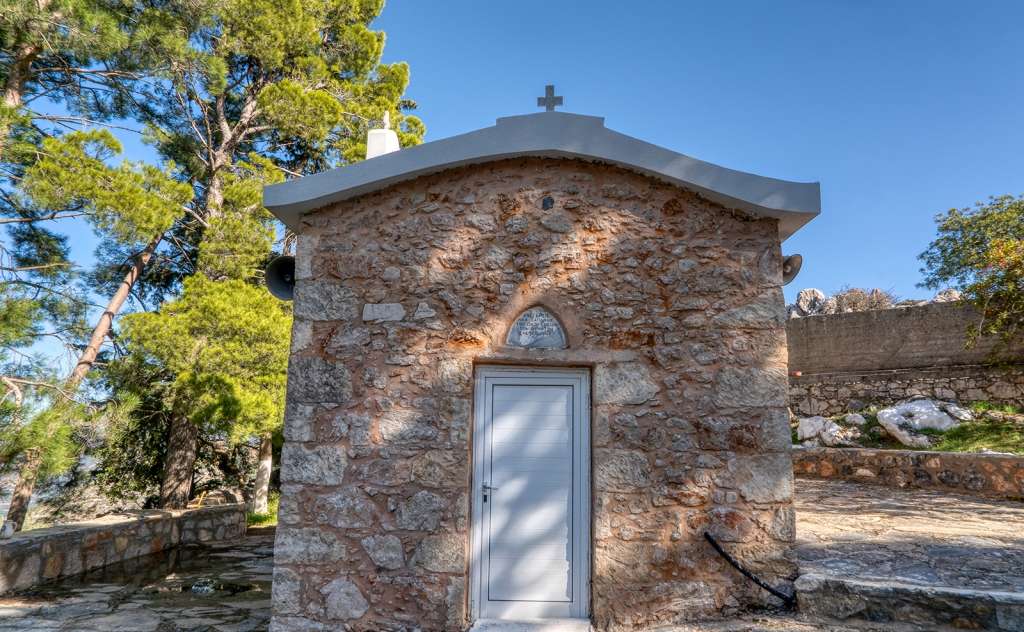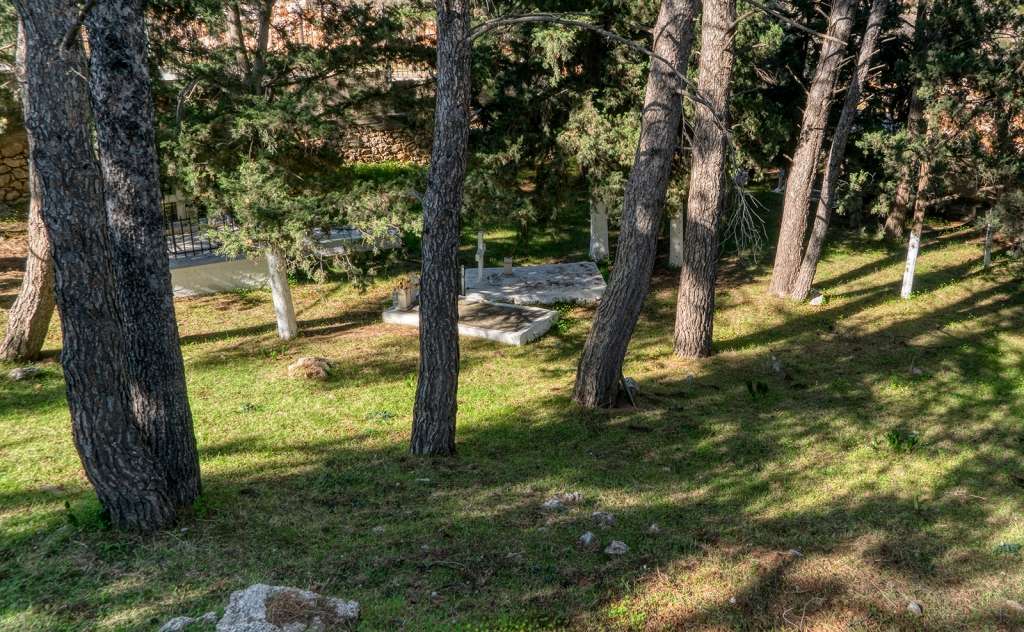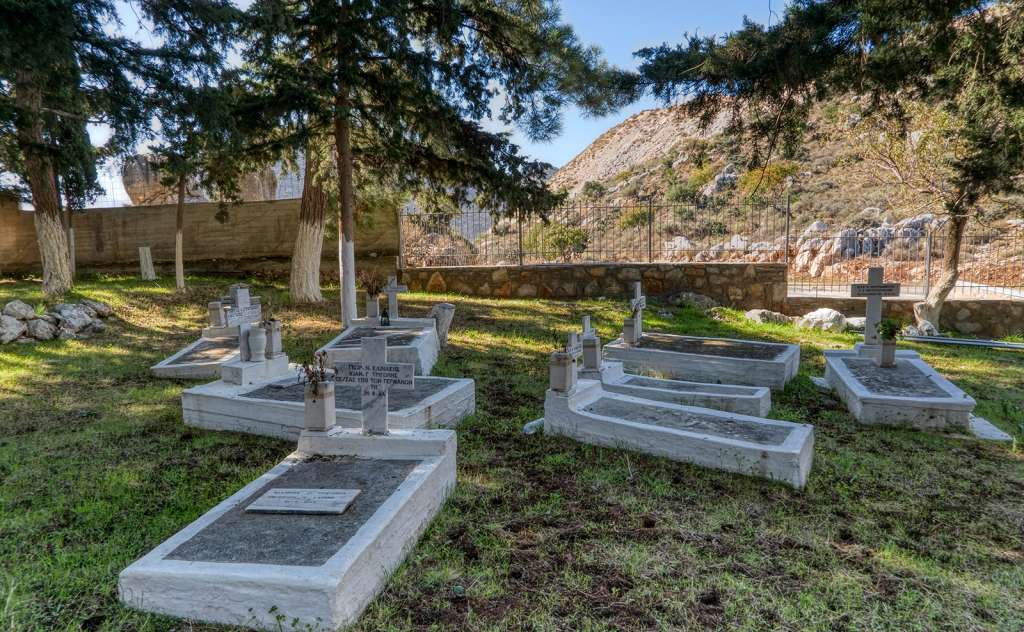Keratidi Monument
At Keratidi, on a hill east of the village of Damasta, the visitor can see the monument and the tombs of those executed by the Germans. Thirty cypress trees have been planted at the execution site, one for every young man who was, so unjustly, lost. In March 2000, with a Presidential Decree, Damasta was declared a martyrdom village, while Keratidi was designated a "place of historical importance" by the Ministry of Culture in 1997.
The Damascus sabotage was organised and carried out by a group of Anogia rebels in which six Russian soldiers took part. English Captain Bill Moss led the operation. Every morning, a mail truck passed by Damasta, accompanied by thirty armed German soldiers and an armoured vehicle with a mydralio (machine gun). The blockade was set up 1 km west of Damasta. The guerrillas killed several Germans and disappeared. The Germans considered the villagers to be accomplices, and in retaliation, on August 21st, 1944, they selected the thirty most combative men in the village and executed them at Keratidi. The other men were taken prisoners, and the women and children were removed to other villages. Also, almost all the houses in Damasta were set on fire and were eventually demolished.



